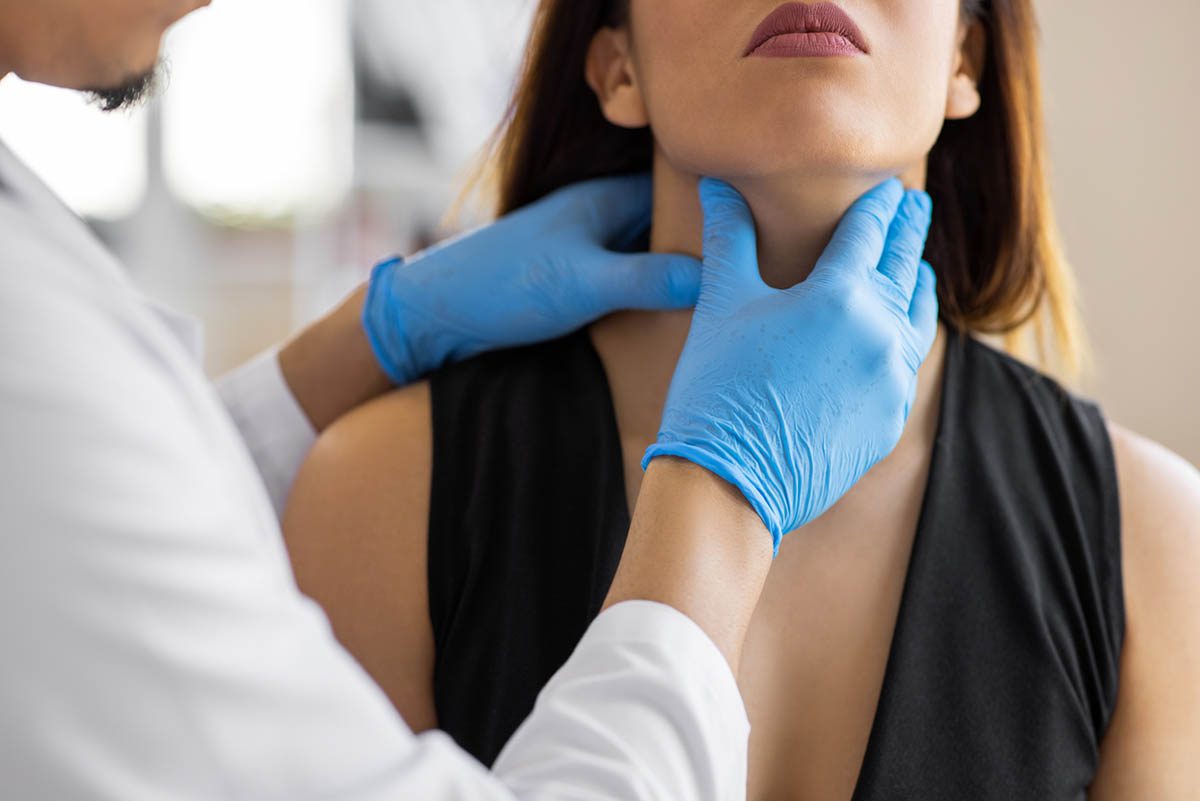

Priapism Associated With Atypical Antipsychotic Medications:
A Clinical Report
Priapism is a prolonged and painful penile erection in the absence of sexual stimulation1-5 and is considered a urologic emergency. The most common priapism presentation is the ischemic type, which can result in corpora cavernosa fibrosis, with a significant risk of persistent erectile dysfunction (30%-90%)3,6,7 and in severe cases requires penile amputation.8 The severity is frequently associated with late presentation to medical care. Although there are several etiologic factors, medications remain the most common cause,2,4 with the histaminic and α1-adrenergic antagonism a possible mechanism.1,9 As such, psychotropic medications can contribute to such idiosyncratic events,9 with antipsychotics being responsible for about half of the cases of iatrogenic venous priapism.3
Case Report
A 32-year-old single man had a psychiatric history of paranoid schizophrenia for 11 years. He had no history of substance use disorders or nonpsychiatric medical comorbidity. His last hospitalization in a psychiatric department occurred 2 months before this episode and was motivated by auditory hallucinations and paranoid ideation. He was discharged with clozapine 100 mg/d. Due to psychotic symptom persistency, paliperidone palmitate 100 mg was initiated, with subsequent symptom remission. Four weeks after initiating paliperidone, he experienced a 36-hour painful priapism. The patient denied sexual intercourse or masturbatory habits in the last 2 months, with feelings of shame and embarrassment caused by the prolonged erection and postponing medical care until the pain became unbearable. He was then taken to the emergency department and diagnosed with acute iatrogenic priapism. He underwent a single urologic intervention and was admitted to the surgical ward. Subsequent urologic investigation suggested no pathology that could explain the etiology of priapism, which therefore was attributed to antipsychotics. He was treated with amisulpride due to its relative low affinity for adrenergic receptors. During the rest of inpatient and aftercare surgical follow-up treatment, no more priapism or sexual complaints were observed.
Discussion
Occurrence of priapism is related to α-adrenergic blockage mediated by the α receptors in the corpora cavernosa of the penis.2 Among typical antipsychotics, there are cases associated with the use of chlorpromazine, levomepromazine, haloperidol,3,10,11 and zuclopenthixol.3 In the atypical group, risperidone and ziprasidone have the highest affinity for α-adrenergic receptors7 and have been associated with several cases2,3,12 of priapism when administered as monotherapy or in combination. However, there are several cases of priapism with lower α1 antagonism such as olanzapine,11,13 quetiapine,3,9,10,14,15 clozapine,10 aripiprazole,7,14,16 and paliperidone.1,14,17 Although there are numerous priapism reports associated with oral antipsychotics, fewer cases are reported with long-acting antipsychotics. No reports of priapism associated with amisulpride and pipothiazine were found.3 Thus, amisulpride would be a reasonable choice for treatment12 because currently, to our knowledge, it is the only available drug that does not have α-adrenergic affinity.11
Our patient developed priapism with clozapine and paliperidone palmitate treatment. The gradual increase in the dose of clozapine, an antipsychotic with α-adrenergic antagonism action, may have been the cause of priapism. The anticholinergic properties of paliperidone may be implicated in priapism, especially with the concomitant use of other drugs with affinity for α1-adrenergic receptors.
Priapism is a rare but severe adverse event, and this case highlights the need for early recognition and treatment. Cases associated with clozapine are widely reported, but there are few reported cases of priapism associated with paliperidone. This is the first case report of priapism, to our knowledge, associated with clozapine and paliperidone palmitate. Switching to another antipsychotic with less α-blocking properties is generally recommended,11 with amisulpride as the preferred choice of treatment.
Published online: July 16, 2020.
Potential conflicts of interest: None.
Funding/support: None.
Patient consent: Consent was received from the patient to publish the case report, and information has been de-identified to protect anonymity.
REFERENCES
1.Compton MT, Miller AH. Priapism associated with conventional and atypical antipsychotic medications: a review. J Clin Psychiatry. 2001;62(5):362-366. PubMed CrossRef
2.Sood S, James W, Bailon M-J. Priapism associated with atypical antipsychotic medications: a review. Int Clin Psychopharmacol. 2008;23(1):9-17. PubMed CrossRef
3.Brichart N, Delavierre D, Peneau M, et al. Priapism associated with antipsychotic medications: a series of four patients. Prog Urol. 2008;18(10):669-673. PubMed CrossRef
4.Büyüköz D, Kabadayi Şahin E, Tatli SZ, et al. Recurrent priapism associated with single dose of paliperidone palmitate: a case report. Anatolian Journal of Psychiatry. 2017;18(5):513–515.
5.Ali S, Sattar Z, Hussain S, et al. A rare case of severe idiopathic stuttering priapism in a young healthy man. Cureus. 2018;10(6):e2758. PubMed
6.Donizete da Costa F, Toledo da Silva Antonialli K, Dalgalarrondo P. Priapism and clozapine use in a patient with hypochondriacal delusional syndrome. Oxf Med Case Rep. 2015;2015(3):229-231. PubMed CrossRef
7.Andersohn F, Schmedt N, Weinmann S, et al. Priapism associated with antipsychotics: role of alpha1 adrenoceptor affinity. J Clin Psychopharmacol. 2010;30(1):68-71. PubMed CrossRef
8.Hoffmann P, Neu ET, Neu D. Penile amputation after trazodone-induced priapism: a case report. Prim Care Companion J Clin Psychiatry. 2010;12(2):PCC.096l00816. PubMed
9.Davol P, Rukstalis D. Priapism associated with routine use of quetiapine: case report and review of the literature. Urology. 2005;66(4):880. PubMed CrossRef
10.Casiano H, Globerman D, Enns MW. Recurrent priapism during treatment with clozapine, quetiapine and haloperidol. J Psychopharmacol. 2007;21(8):898-899. PubMed CrossRef
11.Doufik J, Otheman Y, Khalili L, et al. Antipsychotic-induced priapism and management challenges: a case report. Encephale. 2014;40(6):518-521. PubMed CrossRef
12.Paklet L, Abe AM, Olajide D. Priapism associated with risperidone: a case report, literature review and review of the South London and Maudsley Hospital patients’ database. Ther Adv Psychopharmacol. 2013;3(1):3-13. PubMed CrossRef
13.Schiraldi C, Todarello O. Irreversible priapism during treatment with olanzapine and topiramate. J Psychopathology. 2013;19:363-364. CrossRef
14.Torun F, Yılmaz E, Gümüş E. Priapism due to a single dose of quetiapine: a case report. Turk Psikiyatr Derg. 2011;22(3):195–199. PubMed
15.Tsai AC. A case of recurrent priapism in the context of quetiapine use, discontinuation, and rechallenge. J Clin Psychopharmacol. 2011;31(2):235-236. PubMed CrossRef
16.Trivedi SK, Mangot AG, Sinha S. Aripiprazole-induced priapism. Ind Psychiatry J. 2016;25(1):119-121. PubMed CrossRef
17.Wearne D. A case of priapism associated with paliperidone. Aust N Z J Psychiatry. 2014;48(10):962. PubMed CrossRef
aDepartment of Psychiatry and Mental Health, Hospital Distrital de Santarém, Santarém, Portugal
bDepartment of Psychiatry, Hospital Prof. Doutor Fernando da Fonseca, Amadora, Portugal
cDepartment of Psychiatry, Hospital do Esp×rito Santo, Évora, Portugal
*Corresponding author: Liliana P. Ferreira, MD, Department of Psychiatry and Mental Health, Hospital Distrital de Santarém, EPE, Av. Bernardo Santareno 3737B, 2005-177 Santarém, Portugal (lilianapf@gmail.com).
Prim Care Companion CNS Disord 2020;22(4):19l02543
To cite: Ferreira LP, Ferreira TF, Godinho FF, et al. Priapism associated with atypical antipsychotic medications: a clinical report. Prim Care Companion CNS Disord. 2020;22(4):19l02543.
To share: https://doi.org/10.4088/PCC.19l02543
© Copyright 2020 Physicians Postgraduate Press, Inc.
Please sign in or purchase this PDF for $40.00.




